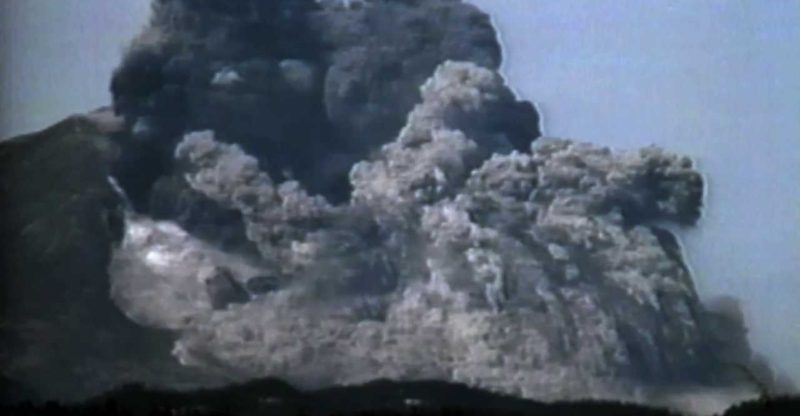Photographing a Catastrophic Explosion at Mt. St. Helens
These are the only images that exist of this
catastrophic event. But this sequence was not shot by a video
camera. Instead, it was created by USGS scientists
and graphic artists based on a series of extraordinary still photographs taken by an amateur photographer named Gary
Rosenquist. On May 18th, 1980, he was standing ten miles away from the mountain
next to local resident Keith Ronnholm. He was on a tripod with a motorized drive
and just was ch, ch, ch and took a very much time based sequence. I don't think he was trying to, to make a
scientific record but it turned out to be a very good record of the event. And I know it was used by many scientists
to try to time the event and to measure how fast the, the landslide
occurred. The landslide and the, the explosions begin
and they get very large very quick.
So it helped to understand what had happened. The first frame of the Rosenquist sequence
was taken at 8:32 AM and 21 seconds. It reveals an intact volcano. But what the image doesn't show is what was
happening inside. Magma was forcing its way up into the volcano. And to make room for itself, it was starting
to shove rock aside. So those rocks sliding across each other was
causing some of these earthquakes. It wants to get out somewhere and the north
side seems to be the weak side. And it starts bulging there. This looked like a big bad blister on a tire. Inside, the earthquakes and super heated magma
have forced the north wall of the mountain to collapse. The second frame is taken 26 seconds later, capturing the weakened north flank and summit. The video morph shows the mountain collapsing
into two huge landslide blocks. Six seconds later, Gary's third photo shows the top landslide
block as it begins to plunge down the volcano.

The sequence depicts its movement at nearly
200 miles per hour. Still frame four shows the landslide after
it has removed the north flank, depressurizing the magma and boiling ground
water. The video morph reveals a series of sudden
violent explosions of gas, steam and rocks. This is known as a lateral blast. Gary's final frame is taken about 15 seconds
later. The lateral blast accelerates to 336 miles
an hour, completely obscuring the landslide..













